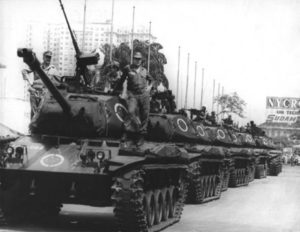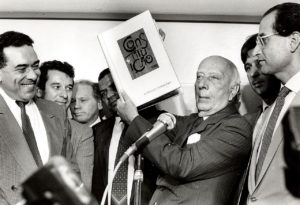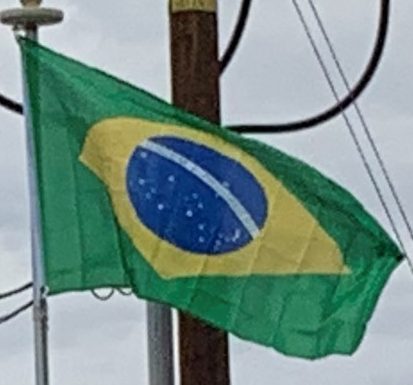The new regime was intended to be transitory but gradually closed in on itself and became a full dictatorship with the promulgation of the Fifth Institutional Act in 1968. Oppression was not limited to those who resorted to guerrilla tactics to fight the regime, but also reached institutional opponents, artists, journalists and other members of civil society, inside and outside the country through the infamous “Operation Condor“. Despite its brutality, like other authoritarian regimes, due to an economic boom, known as an “economic miracle”, the regime reached a peak in popularity in the early 1970s.
Slowly however, the wear and tear of years of dictatorial power that had not slowed the repression, even after the defeat of the leftist guerrillas, plus the inability to deal with the economic crises of the period and popular pressure, made an opening policy inevitable, which from the regime side was led by Generals Ernesto Geisel and Golbery do Couto e Silva. With the enactment of the Amnesty Law in 1979, Brazil began a slow return to democracy, which was completed during the 1980s.

Civilians returned to power in 1985 when José Sarney assumed the presidency. He became unpopular during his tenure through failure to control the economic crisis and hyperinflation he inherited from the military regime. Sarney’s unsuccessful government led to the election in 1989 of the almost-unknown Fernando Collor, subsequently impeached by the National Congress in 1992.
Collor was succeeded by his vice-president, Itamar Franco, who appointed Fernando Henrique Cardoso Minister of Finance. In 1994, Cardoso produced a highly successful Plano Real, that, after decades of failed economic plans made by previous governments attempting to curb hyperinflation, finally stabilized the Brazilian economy. Cardoso won the 1994 election, and again in 1998.
The peaceful transition of power from Cardoso to his main opposition leader, Luiz Inácio Lula da Silva (elected in 2002 and re-elected in 2006), was seen as proof that Brazil had achieved a long-sought political stability. However, sparked by indignation and frustrations accumulated over decades from corruption, police brutality, inefficiencies of the political establishment and public service, numerous peaceful protests erupted in Brazil from the middle of first term of Dilma Rousseff, who had succeeded Lula after winning election in 2010.

Enhanced by political and economic crises with evidence of involvement by politicians from all the primary political parties in several bribery and tax evasion schemes, with large street protests for and against her, Rousseff was impeached by the Brazilian Congress in 2016. In 2017, the Supreme Court asked for the investigation of 71 Brazilian lawmakers and nine ministers in President Michel Temer‘s cabinet allegedly linked to the Petrobras corruption scandal. President Temer is himself accused of corruption. In 2018, 62% of the population on a poll claimed that corruption was Brazil’s biggest problem.
Geography:
Brazil occupies a large area along the eastern coast of South America and includes much of the continent’s interior, sharing land borders with Uruguay to the south; Argentina and Paraguay to the southwest; Bolivia and Peru to the west; Colombia to the northwest; and Venezuela, Guyana, Suriname and France (French overseas region of French Guiana) to the north. It shares a border with every South American country except Ecuador and Chile.
